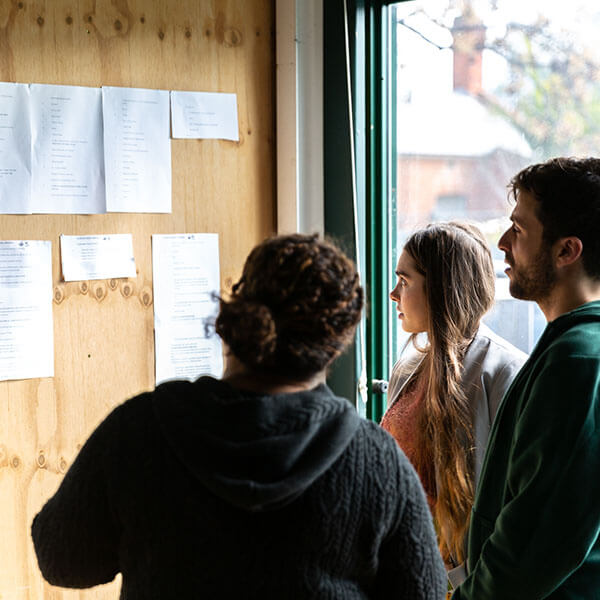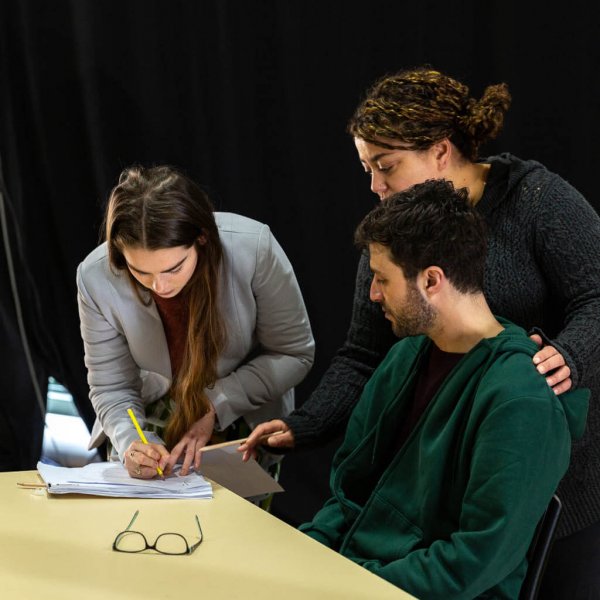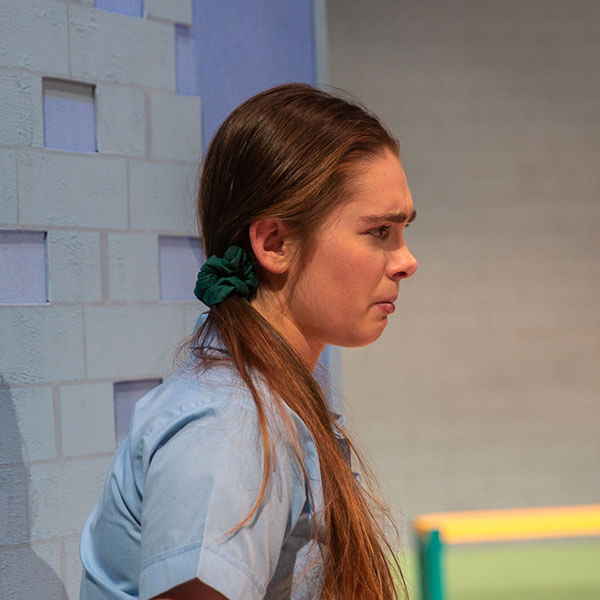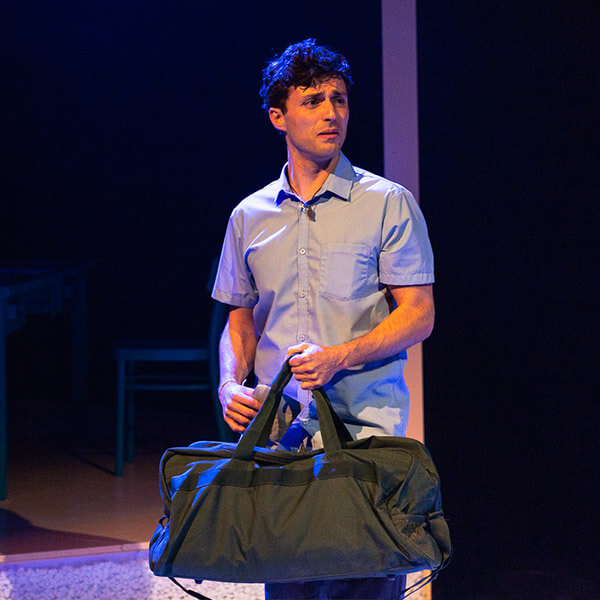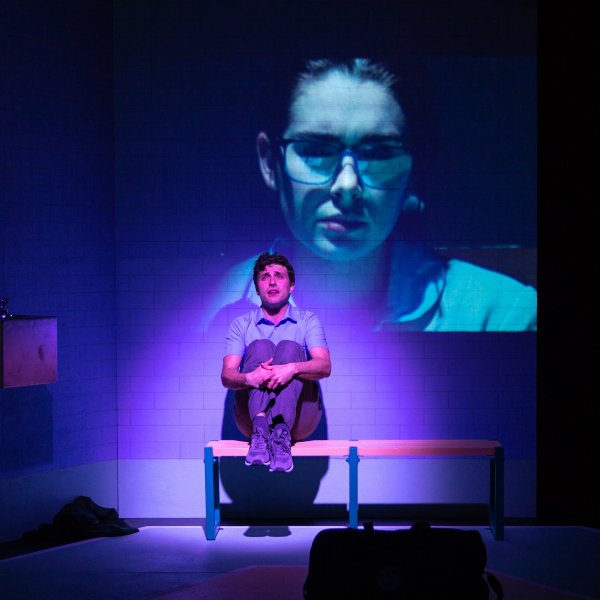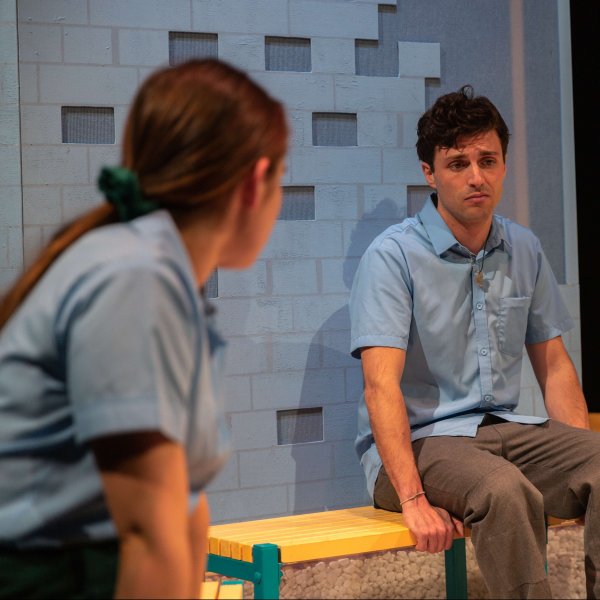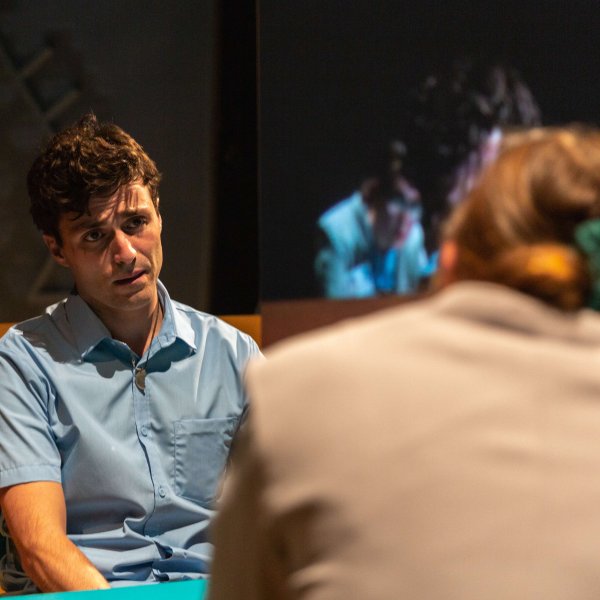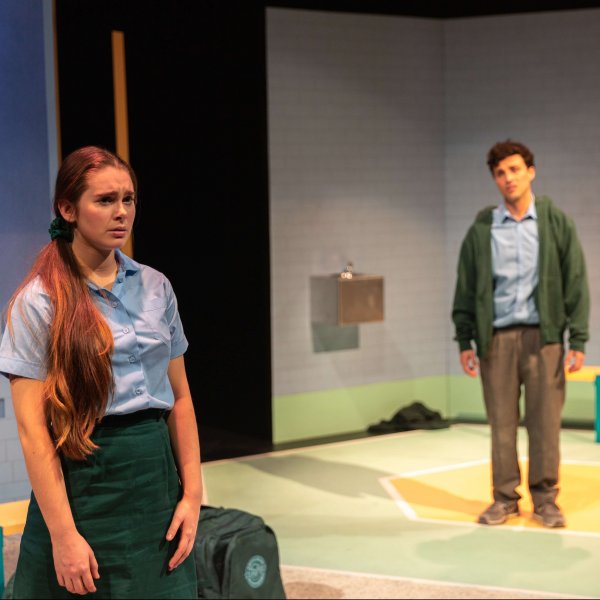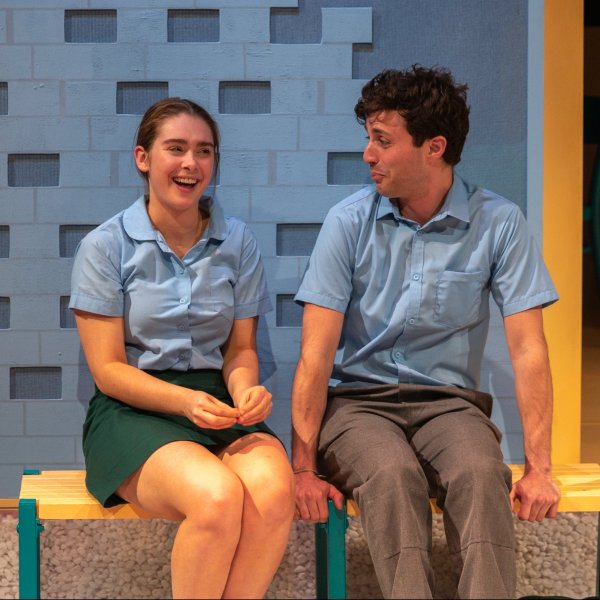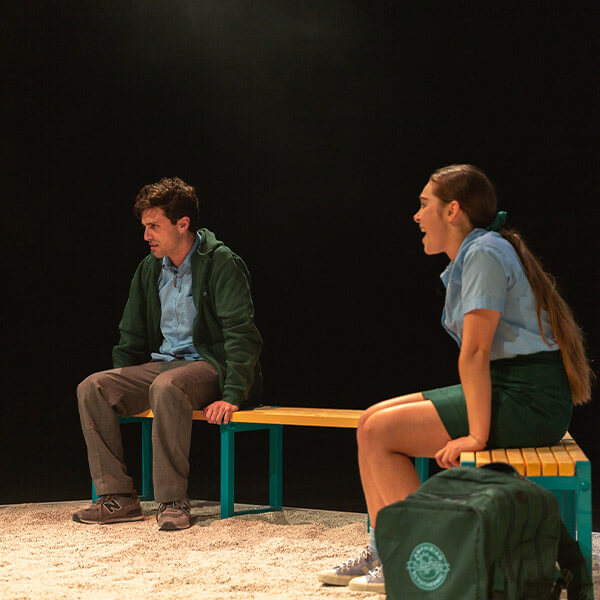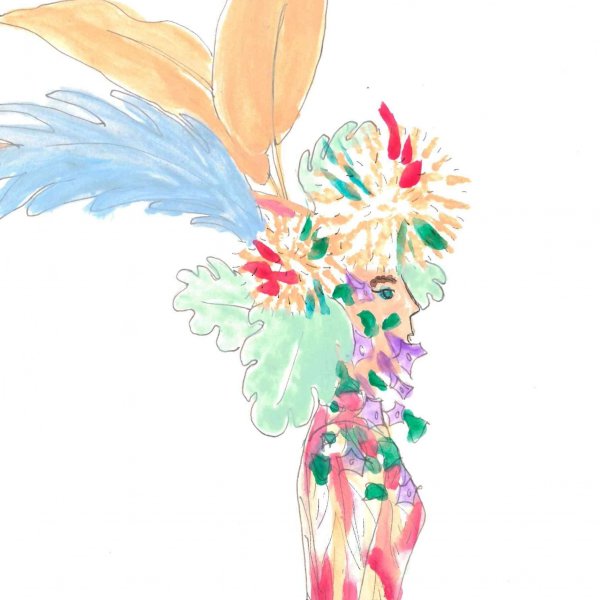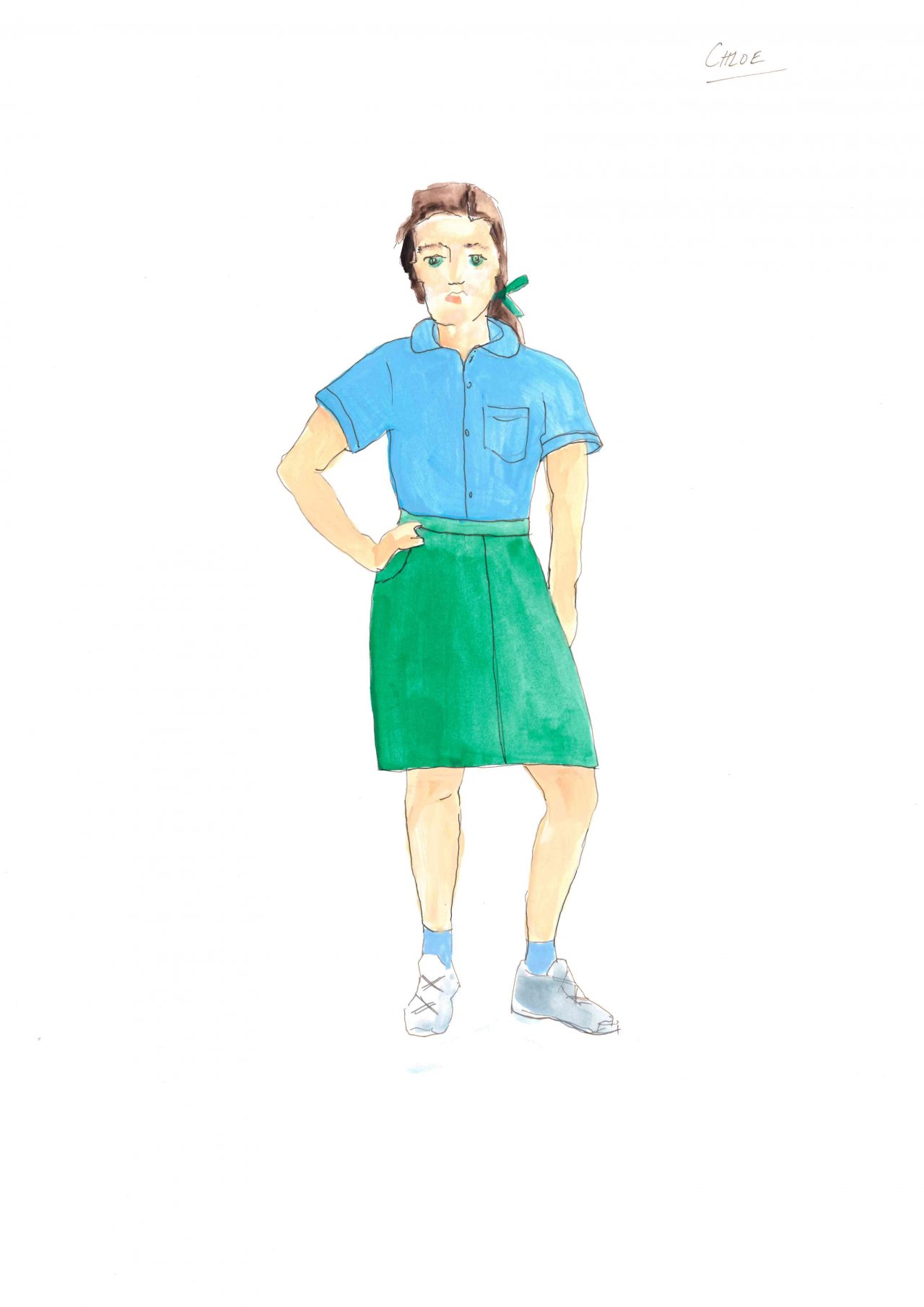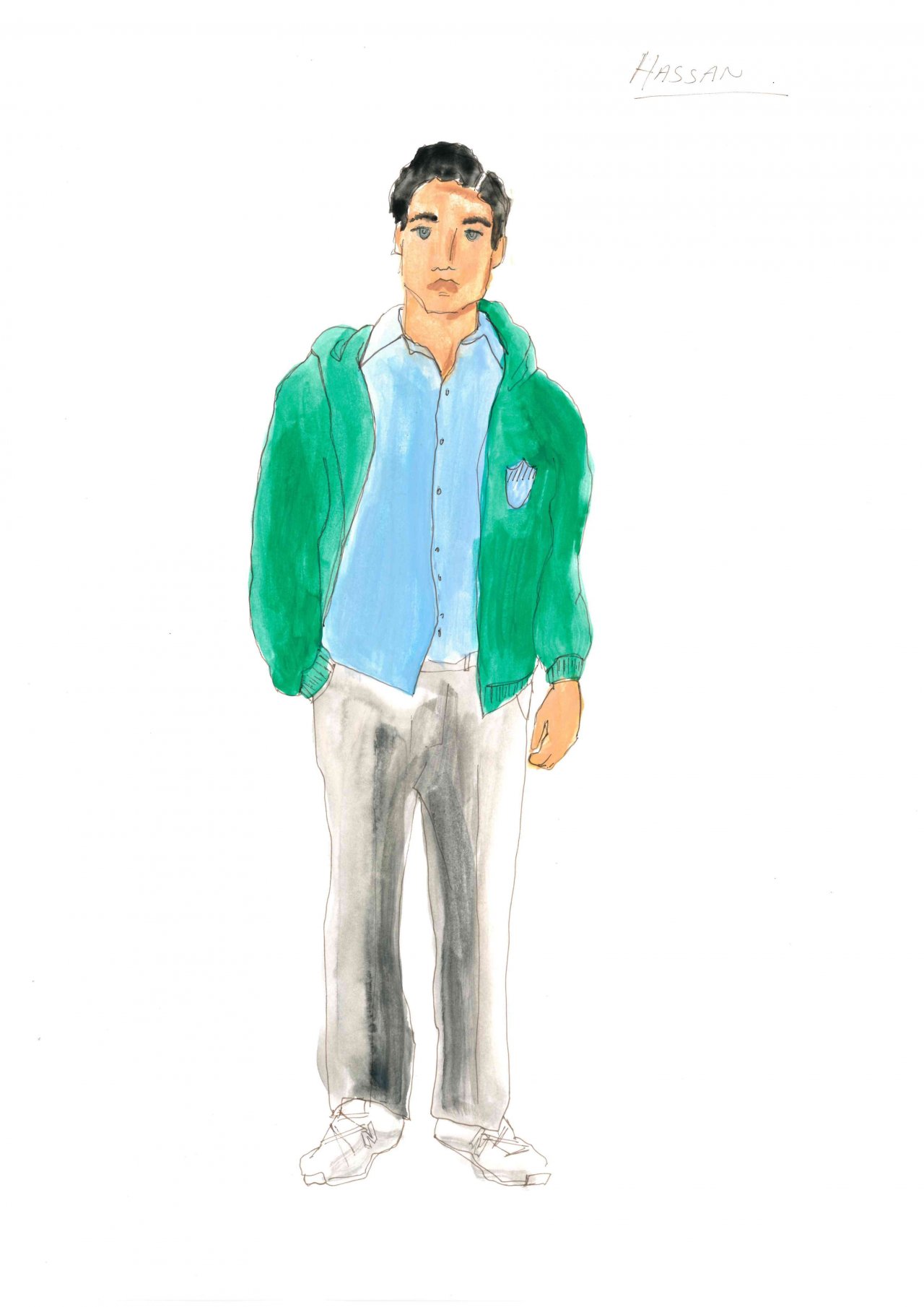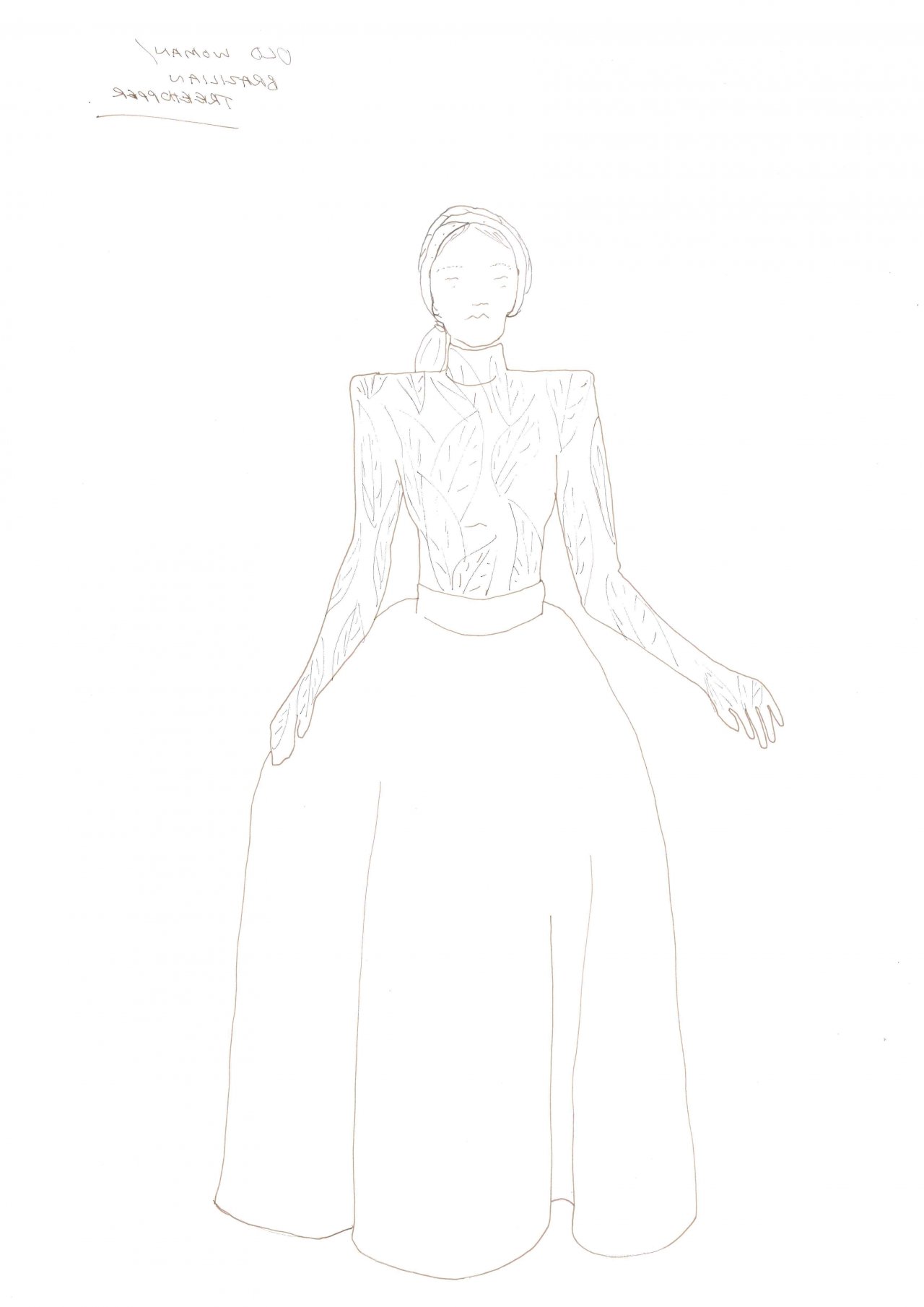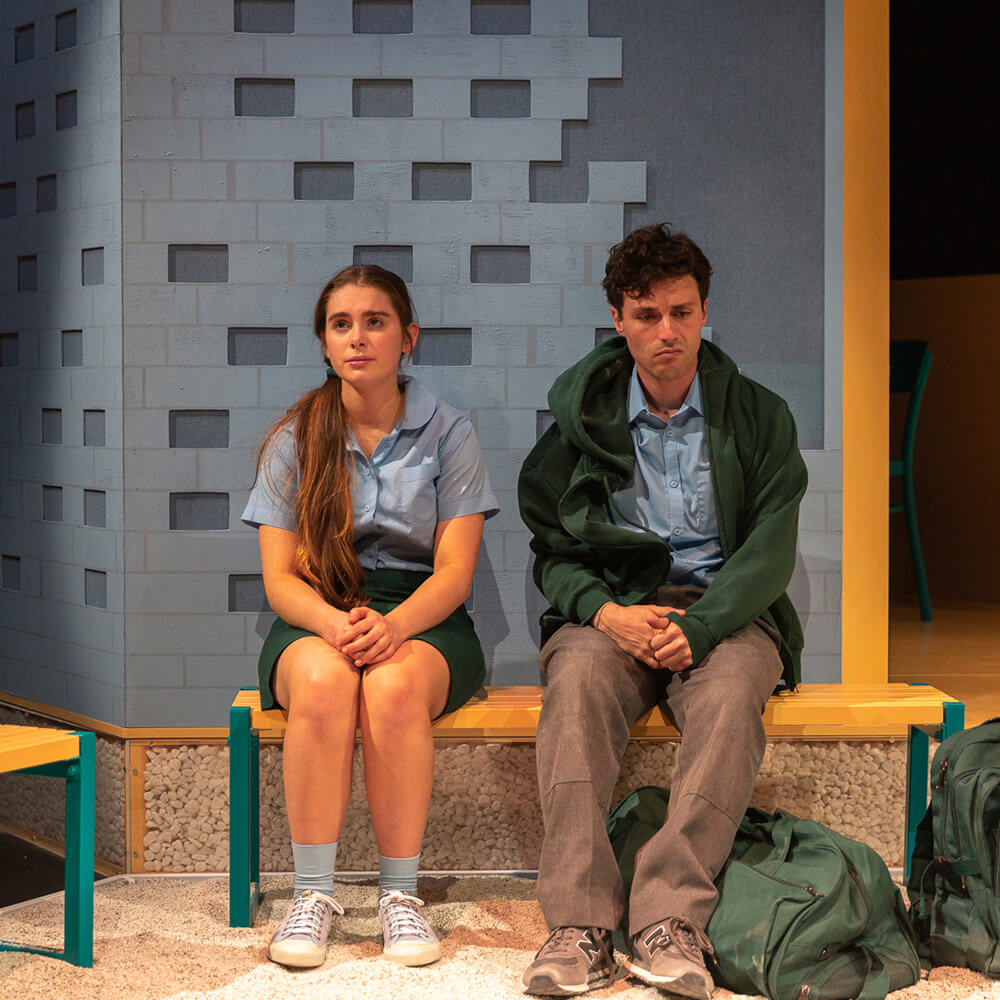Prepare
Year 9 English Achievement Standard Addressed
Receptive modes (listening, reading and viewing)
By the end of Year 9, students analyse the ways that text structures can be manipulated for effect. They analyse and explain how images, vocabulary choices and language features distinguish the work of individual authors.
They evaluate and integrate ideas and information from texts to form their own interpretations. They select evidence from texts to analyse and explain how language choices and conventions are used to influence an audience. They listen for ways texts position an audience.
Productive modes (speaking, writing and creating)
Students understand how to use a variety of language features to create different levels of meaning. They understand how interpretations can vary by comparing their responses to texts to the responses of others. In creating texts, students demonstrate how manipulating language features and images can create innovative texts.
Students create texts that respond to issues, interpreting and integrating ideas from other texts. They make presentations and contribute actively to class and group discussions, comparing and evaluating responses to ideas and issues. They edit for effect, selecting vocabulary and grammar that contribute to the precision and persuasiveness of texts and using accurate spelling and punctuation.
Year 9 and 10 English content descriptions addressed – LANGUAGE, LITERATURE and LITERACY
Analyse and explain the use of symbols, icons and myth in still and moving images and how these augment meaning (ACELA1560)
Identify how vocabulary choices contribute to specificity, abstraction and stylistic effectiveness (ACELA1561)
Interpret and compare how representations of people and culture in literary texts are drawn from different historical, social and cultural contexts (ACELT1633)
Present an argument about a literary text based on initial impressions and subsequent analysis of the whole text (ACELT1771)
Explore and reflect on personal understanding of the world and significant human experience gained from interpreting various representations of life matters in texts (ACELT1635)
Investigate and experiment with the use and effect of extended metaphor, metonymy, allegory, icons, myths and symbolism in texts, for example poetry, short films, graphic novels, and plays on similar themes (ACELT1637)
Use interaction skills to present and discuss an idea and to influence and engage an audience by selecting persuasive language, varying voice tone, pitch, and pace, and using elements such as music and sound effects (ACELY1811)
Plan, rehearse and deliver presentations, selecting and sequencing appropriate content and multimodal elements for aesthetic and playful purposes (ACELY1741)
Create imaginative, informative and persuasive texts that present a point of view and advance or illustrate arguments, including texts that integrate visual, print and/or audio features (ACELY1746)
Before the Play
ACTIVITY
This unit includes activities and assessment linked to English, Australian Curriculum for Year 9. Teachers can choose to use individual activities to complement existing English units or complete the entire unit of work with their students.
The learning activities can provide a structure to view and explore Amphibian with your students. They will provide opportunity for students to explore the study resources for Amphibian independently as well as generate class discussion and sharing of interpretations of the play.
Tune-in
Individually or in pairs, students look up and define the following words. Students should aim to correctly use the word in a sentence:
- Amphibian
- Axolotl
- Salamander
- Chameleon
- Metamorphose
- Change
- Taliban
- Fundamental State
- Infidel
- Preconceived
- Prejudice
- Ignorance
- Empathy
- Sympathy
- Adrift
- Afloat
- Awash
- Astray
- Agog
Students discuss with their elbow buddy or table group: What connections do they think the words have to each other?
Considering their responses, students answer: What do they think the play, Amphibian will be about?
Explore and Apply
Students write a written response to the following questions. Have you ever been in a situation where you:
- were falsely accused for something you didn’t do?
- were unfairly judged for stealing?
- weren’t believed about something?
Students then write a written response to the following question:
- Have you been in a situation where you didn’t believe someone else or hadn’t trusted that someone else was being truthful?
Create
Students to play the game ‘Two Truths One Lie’. In this game students individually write down two truths and one lie about themselves, making sure that no one else can see what they have written. Once they have written down these points, students should consider how to present the story and context around these three points to the class. Tell the students, that in a moment, they will present their two truths and one lie to the group. Students will have to provide the context around their three points and the class may ask questions to work out the lie. Therefore students should consider carefully how they will present their ideas and the stories around them.
Each student will then present their two truths and one lie to the class. (Encourage students to mix it up so students don’t always present the lie last). The class may ask questions of the student presenting or ask for further information. Once the student presenting has finished, the class is to vote for what they think the lie is. After the vote, the student can reveal the answer.
After playing the game, students should reflect about what made someone’s points more believable than another? In their reflection, students should consider:
- Sincerity and believability of student presenter.
- Use of persuasive devices in story.
- Persuasiveness and confidence of student presenter’s delivery (including verbal and non-verbal skills).
Critique
As a class, students read the play’s synopsis (see the synopsis section of this resource) and individually research the term, ‘amphibian’. Students read the themes of the play specifically, ‘displacement’ ‘adapting to different worlds’ and ‘choice’ (see the themes section of this resource). Drawing on their knowledge from Tune-in and Explore and Apply activities above, brainstorm the connection of these themes to the concepts of Metamorphosis and Change. Students will use Padlet to submit their responses to be projected in the classroom in real time.
Students then write an individual response that explains the relevance of Metamorphosis and Change within the play and why these words might be key symbols within the play. In their justification encourage students to incorporate points from the class’ brainstorming and their research about amphibians.
Padlet
LEARNING OUTCOMES
Analyse and explain the use of symbols, icons and myth in still and moving images and how these augment meaning (ACELA1560)
Identify how vocabulary choices contribute to specificity, abstraction and stylistic effectiveness (ACELA1561)
Interpret and compare how representations of people and culture in literary texts are drawn from different historical, social and cultural contexts (ACELT1633)
Present an argument about a literary text based on initial impressions and subsequent analysis of the whole text (ACELT1771)
Use interaction skills to present and discuss an idea and to influence and engage an audience by selecting persuasive language, varying voice tone, pitch, and pace, and using elements such as music and sound effects (ACELY1811)
Explore and reflect on personal understanding of the world and significant human experience gained from interpreting various representations of life matters in texts (ACELT1635)
Investigate and experiment with the use and effect of extended metaphor, metonymy, allegory, icons, myths and symbolism in texts, for example poetry, short films, graphic novels, and plays on similar themes (ACELT1637)
After the Play
ACTIVITY
Tune-in
Students review the themes evident in Amphibian (see the themes section of this resource). Explore the idea of gaps within a text. The gaps (or unanswered questions) in the text by the end of the play are mostly filled in by Hassan as he tells his story to Chloe. Discuss what themes are present during Hassan’s flashback in the retelling of his story? What gaps are still present within the text?
One gap within the text is Chloe and Eleni’s conversation in the morning, as this is not a scene that is present within the performance. The audience (and Hassan) make assumptions and inferences about what occurs in this conversation. The impact of this conversation could have huge ramifications on discovering who stole the wallet. Students discuss what might have been said between the two girls that morning. Students use Padlet to submit their responses to be projected in the classroom in real time. Ask students to connect a theme or themes to this gap in the text.
Using correct dialogue punctuation and story-writing skills, students individually write the conversation and story they believe occurred between Chloe and Eleni. Students use their imagination to make judgments about how this conversation could impact the ‘truth’ behind the stolen wallet.
Ask students to then pair up with their elbow buddy and imagine that Mrs Damascus has called in Chloe and Hassan one by one. Students write the conversation between Mrs Damascus and either Hassan or Chloe – each student in the pair must take a different character relationship. That is: one student writes the conversation and story between Hassan and Mrs Damascus and the other student writes the conversation between Chloe and Mrs Damascus. Encourage students to consider what is said and thought by the characters and how Mrs Damascus might respond. Also have students refer to information shared between Chloe and Hassan outside the classroom and consider the themes of ‘truth’, ‘choice’, ‘relationship’ and ‘empathy’.
Students to compare stories with their elbow buddy and discuss. Share with the class.
Now imagine that Chloe is retelling the story to her Mum after school. Ask students to write from Chloe’s perspective:
- What does she say?
- What was important to her?
- How might she word the retelling to her mum?
- Does Chloe share her ‘empathy’ for Hassan with her mum?
- Does she tell her the ‘truth’? Consider how this might affect her ‘relationship’ with her mum.
Students might also consider the mother’s preconceived ideas and prejudices of Hassan.
This activity could form a larger part of an assessable task by completing an Imaginative Response to Literature: Short Story Transformation. (Sample Task 6). Example of a similar task
Padlet
Explore and Apply
Students discuss with their elbow partner the question: ‘Who was the culprit who stole Mrs Damascus’ money?’
Within table groups, identify reasons (for or against) why Hassan, Chloe or another character may have stolen the wallet. When providing reasons, ask students to give specific examples from the play, lines of dialogue, or the backstory of each character (see the character descriptions, synopsis and themes sections in this resource) to support their ideas. Also encourage students to focus on the ‘truth’; that is what causes them to believe one character over another.
Students share responses with the class. The teacher writes the responses and ideas on the board or an online recording device such as Padlet.
As a class, choose the eight most likely reasons and using an elimination Graphic Organiser, students will eventually decide which is the most likely cause and reason for stealing the wallet. Students will be numbered off to argue a point for one of the eight reasons for stealing the wallet. Students to develop a persuasive paragraph to argue their case to the class. Use a persuasive paragraph structure such as the Hamburger, PRES or OREO to help guide the writing of student paragraphs. Encourage the use of persuasive devices such as triplets, alliteration, modal verbs and imagery.
Students rehearse speaking their paragraphs and then present them to the class. Each Student Number 1 will Vs Student Number 2. (Student Number 3 vs 4, 5 vs 6, 7 vs 8). Ask students to decide via a class vote, who has proven the truth of each character more convincingly through their reasoning. The winner of the vote moves on to the next stage. Continue the elimination process until a winner is found.
Students are to consider that when deciding who won the persuasive debate, they made a decision about a student’s argument that was more believable and truthful than anothers. Students write a written reflection considering:
- Potentially the student may have just been a better speaker and made some strong points that made them more trustworthy.
- Or maybe they might have had some preconceived ideas about a particular student who delivered the argument.
Considering the characters, Chloe and Hassan, students consider what makes one character more ‘trustworthy’ than the other:
- Does Chloe have some preconceived ideas and prejudices against Hassan?
- Does this change throughout the play? Why?
- Did your opinion about who was telling the truth change over the course of the play?
- Do you think Mrs Damascus would consider her own prejudices in making her decision?
Padlet
Critique
Literary Symbols vs Visual Symbols.
Explain to students that symbols are objects, characters, figures, colours or words used to represent abstract ideas or concepts. They usually evoke a range of additional meaning beyond its literal significance. They appear small in the grand scheme of the play but provide great insight and can add impact to the play and its themes. In plays and stories, symbols are both visual (an object, action or image in the play) and literary (written in the text itself, spoken – metaphorically referred to by the characters).
Students identify with their elbow partner some well-known symbols present in their day to day lives and discuss their meaning. The teacher might want to suggest some symbols as the basis for the discussion e.g. The Cross, Skull and Cross Bone, White Flag, Money etc. (This could become an extended activity with the students creating flip cards: on one side they write and draw a symbol, and on the other side of the card they write the meaning of the symbol. Once cards have been created, share with others in the class as they try to guess what the symbols represent).
Students to create a mind map of the symbols evident in the play. Categorise them using different coloured highlighters as either visual (seen in the play) or literary (spoken by the characters).
Discuss answers as a class. Students to add any symbols to their Mind Map that they have not yet thought about.
Students to extend their mind map by thinking about what the symbols might mean in the context of the play (see examples below):
- What do they mean for Hassan?
- What do they represent for either character?
- For the audience?
Examples of symbols from the play include:
Amphibian (literary) – The title of the play is Amphibian. Draw on their previous research about Amphibians. How is this a symbol for the play? For Hassan?
Axolotl (literary) – The class pet is an Axolotl who witnesses the crime. Why is the Axolotl different to other Amphibians? Who might the Axolotl represent in the play or society? (students will need to engage in further research)
Metamorphosis (literary) – How might this be a symbol in the play? What Metamorphosing has happened for Hassan? For Chloe?
Agog (literary) – The Old Woman tells Hassan that he is Agog. Review their previous definition of the word. How is this true for Hassan at that point in time? How is it true for him at school?
Holey undies (visual) – Hassan shows Chloe his holey undies. Why does he continue to wear this worn-out piece of clothing? Why does he feel the need to show Chloe?
The book, Real Life Monsters, Creatures of the Jungle (visual) – This is a book that Hassan takes with him. What might he like about this book? Why is he taking it with him?
The book of poetry (visual) – “Go and seek a more receptive realm. A country more loving in its laws” (literary) – During a dinner conversation with his mother, Hassan is handed this book and translates the quote. Why is this significant? How does this impact his life? How does it impact the mother’s choices?
Airports (visual/literary) – Hassan makes references to the “white light, glass, polished floors” of the airports. Why is this significant for him? How is it showing the disruption and displacement within Hassan’s life? Is he adapting to change at this point?
Old woman (visual) – Treehopper headdress. In a dream, Hassan has a very intriguing encounter with an Old woman with a Brazilian Treehopper headdress. What is significant for Hassan about her carrying this headdress? How does it link to the idea of the amphibian or metamorphosing?
“We all have to stray to be true to ourselves” (literary) – The Old Woman states this quote in Hassan’s dream. What does it mean and represent? How is this true for Hassan? How is this reflected in his current situation with Chloe?
“Kind” (literary) – Kindness is a huge part of Hassan’s values. Why is it so significant to him to be kind? How has he shown the kindness to others?
Phone (visual) – Hassan has carried his phone with him since he left Afghanistan and it has been the object that has helped him claim asylum. Why is it so significant to him? Why is a mobile phone a significant symbol for Eleni? How is this different to how Hassan views his phone?
Mrs Damascus (literary/visual) – What is the significance of her name in the play’s context? (students will need to potentially engage in further research)
Review the themes found in the play (see the themes section of this resource). In a Round Robin activity, write each theme on a large piece of butcher’s paper. Alternatively, students can complete this activity using Padlet to submit their responses to be projected in the classroom in real time.
Consider how these themes are reflected in the play:
- Where is the theme evident in the play?
- How might the theme be reflected in each of the characters?
- How does the theme develop or change from the beginning of the play until the end?
Students consider what symbols connect with these themes. Add their findings to the butcher’s paper. Students write an analytical essay deconstructing the Themes and Symbols in the play. Discuss with students the definition of the cognitive verb, ‘analysis’. Review with students, analytical paragraph writing structure such as PEAL, TEEPEE etc.
Students respond to the following questions in an analytical paragraph:
- How have symbols been incorporated to create meaning in the play?
- What themes have been explored within the play and how do they change and develop?
- How do symbols and themes work together to create meaning in the play Amphibian?
This activity could form a larger part of an assessable task by completing an Imaginative Response to Literature: Short Story Transformation. (Sample Task 3). Example of a similar task
Padlet
Create
Refugees in Australia face prejudice and discrimination mostly due to preconceived opinions or ignorance towards them. How is this true in the relationship between Chloe and Hassan? How is this reflected in the play’s symbols? To further develop their response, students draw on their research and investigation into the symbols, especially axolotls and amphibians completed in the Critique section above.
Students to review their word bank and review the definitions for: preconceived; prejudice; discrimination; and ignorance.
Discuss in table groups how the play has assisted their understanding of the challenges that a refugee faces when fleeing their own country. Students may record these answers using an online resource such as Padlet.
Using the Across Land and Sea: Muzafar’s True Story interactive platform, introduce students to the story of Afghan refugee, Muzafar Ali. Students share with the class any new information they learnt from the story about the plight of refugees.
Students are to write a persuasive essay that encourages people to let go of their own prejudices and preconceived ideas about refugees. Students are to use the definition of the words, examples from the play and Muzafar’s story as reasoning and evidence to support their points and ideas.
Padlet
LEARNING OUTCOMES
Analyse and explain the use of symbols, icons and myth in still and moving images and how these augment meaning (ACELA1560)
Identify how vocabulary choices contribute to specificity, abstraction and stylistic effectiveness (ACELA1561)
Interpret and compare how representations of people and culture in literary texts are drawn from different historical, social and cultural contexts (ACELT1633)
Present an argument about a literary text based on initial impressions and subsequent analysis of the whole text (ACELT1771)
Explore and reflect on personal understanding of the world and significant human experience gained from interpreting various representations of life matters in texts (ACELT1635)
Investigate and experiment with the use and effect of extended metaphor, metonymy, allegory, icons, myths and symbolism in texts, for example poetry, short films, graphic novels, and plays on similar themes (ACELT1637)
Use interaction skills to present and discuss an idea and to influence and engage an audience by selecting persuasive language, varying voice tone, pitch, and pace, and using elements such as music and sound effects (ACELY1811)
Plan, rehearse and deliver presentations, selecting and sequencing appropriate content and multimodal elements for aesthetic and playful purposes (ACELY1741)
Create imaginative, informative and persuasive texts that present a point of view and advance or illustrate arguments, including texts that integrate visual, print and/or audio features (ACELY1746)
